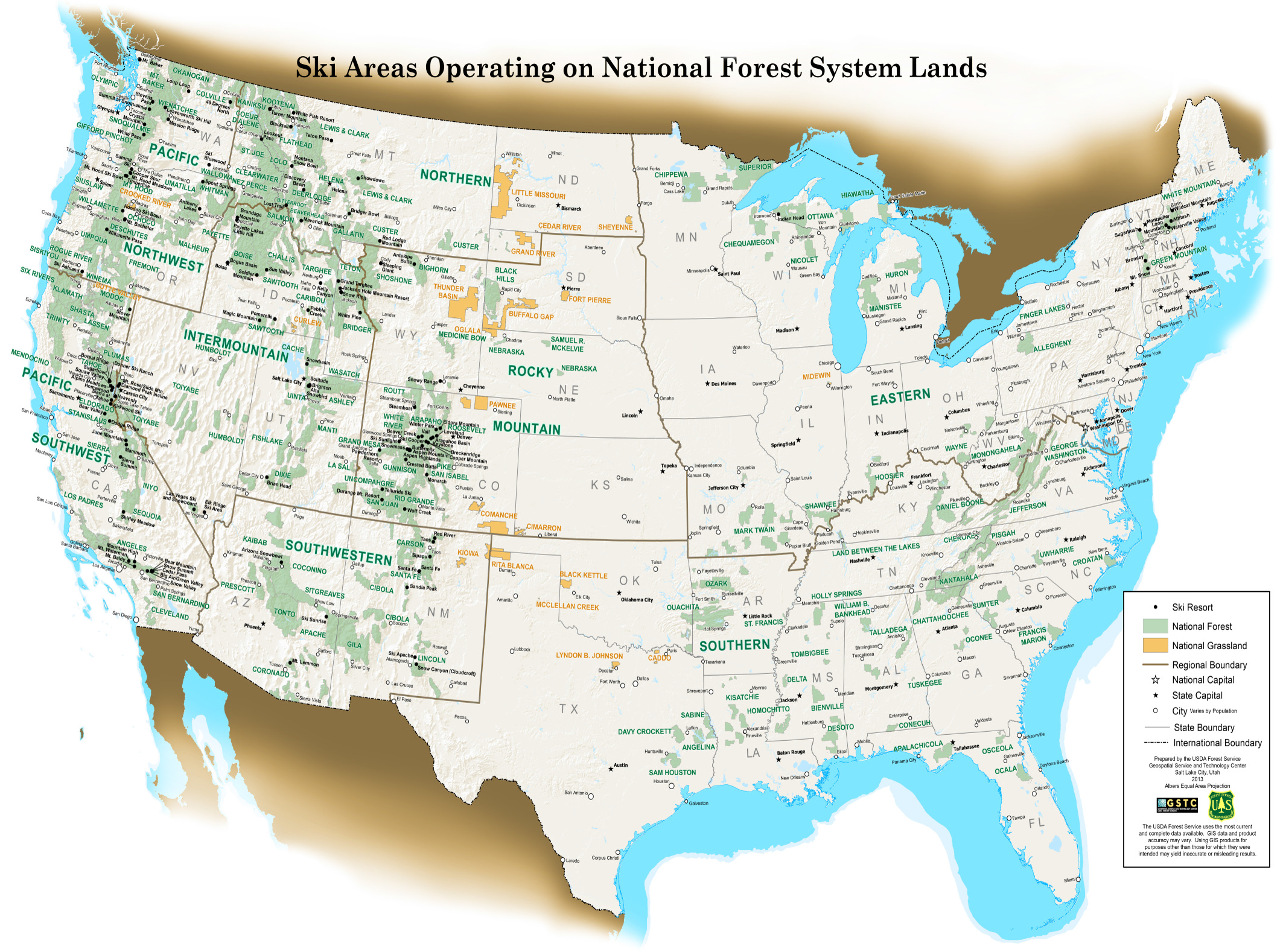A Complete List of Ski Areas on United States Forest Service Land
There are 116, or maybe 128
Why is counting so hard?
A few years ago, E. Wade Muehlhof, deputy national press officer for the U.S. Forest Service, provided me with a map of all U.S. ski areas operating under a USFS lease:
Which was great, given how elusive this document had been. But my quest to understand which U.S. ski areas sat on USFS land would not be so simple. Along with the map, Muehlhof sent a list itemizing USFS ski areas. The problem was that the map, dated 2013, and the list, dated 2022, didn’t match:
Three ski areas appeared on the map, but not on the list: Sunrise, Arizona (which, according to resort officials, is not on USFS land at all); Homewood, California; and Squaw Valley, California (now part of Palisades Tahoe)
Three ski areas that appeared on the list did not appear on the map: Hiawatha, in Michigan’s Upper Peninsula (also known as Chatham Ski Hill); Beartooth Basin, a summer-only ski area in Wyoming; and Meadowlark, Wyoming.
Several ski areas that have not operated in many years appeared on either the map or the list: Elk Ridge, Arizona; Big Air/Green Valley, California; Kratka Ridge, California; Mountain High North, California; Stover Mountain, California; and Spout Springs, Oregon. I knew the fate of some of these, but Kratka hadn’t spun lifts in two decades – why was it still on the list?
Several ski areas are incorrectly located on the map: Cedar Pass, California is listed more than 600 miles south of its actual address; Elk Ridge, Arizona had been placed in Nevada; and the Aspen ski areas are all scrambled relative to their actual location. I’m sure there are other errors, but the general theme is “do not use this in place of your GPS.”
I did not drill into these inconsistencies when I received these documents in August 2022. But as The Pass Tracker 5001 has evolved into the U.S. American Lift-Served Snosportskiing Masterchart so that I can put All The Stuff I’m Tired of Looking Up in one place, I’ve decided it’s time for clarity around which ski areas sit on Forest Service land. I also wanted a quick reference guide on which large ski areas are not on USFS land, so we can analyze what that has meant for the pace of change at those properties versus their government-leased peers.
I also wanted to understand: how much of lift-served U.S. skiing is on USFS ski areas? In a 2017 speech at the National Ski Areas Association convention, then-USFS Chief Tom Tidwell said that the agency’s 122 ski areas accounted for “about 60 percent of the total capacity for downhill skiing in the United States,” with 23 million skier visits that added up to “roughly half of all skier visits nationwide.”
But these numbers are not coming together for me: I’m counting 116 active ski areas on USFS land and 12 inactive ones. While those ski areas’ combined 150,340 acres do represent 63 percent of America’s skiable terrain, not every mountain with a USFS lease operates 100 percent on USFS land. Only “a very small acreage” of the approximately 3,000-acre Olympic Valley side of Palisades Tahoe is on public land, according to a resort representative. And, by the NSAA’s own figures, America recorded 54.7 million skier visits for the 2016-17 ski season – Tidwell’s 23 million would equal 42 percent of that larger figure.
This is also a good time to establish a baseline list of USFS-tied ski areas, as widespread layoffs of federal workers have included up to 3,400 Forest Service employees, and could include up to 7,000 more in coming months (prior to the layoffs, the agency, which is part of the U.S. Department of Agriculture, listed a workforce of 35,000). The USFS does many things, including, most prominently, fight seasonal wildfires, but it will be interesting to see how ski area masterplans and project approvals proceed (or don’t) as government-efficiency efforts wind along. I won’t analyze the impact of this government cleaving in-depth just yet, but the data gathered below will act as a nice foundation once we have more clarity.
So let’s take a look at which ski areas are on USFS land, which large ones are not, which are listed as active USFS ski areas even though they’ve been dormant for years, and how much of our ski landscape this group represents:



